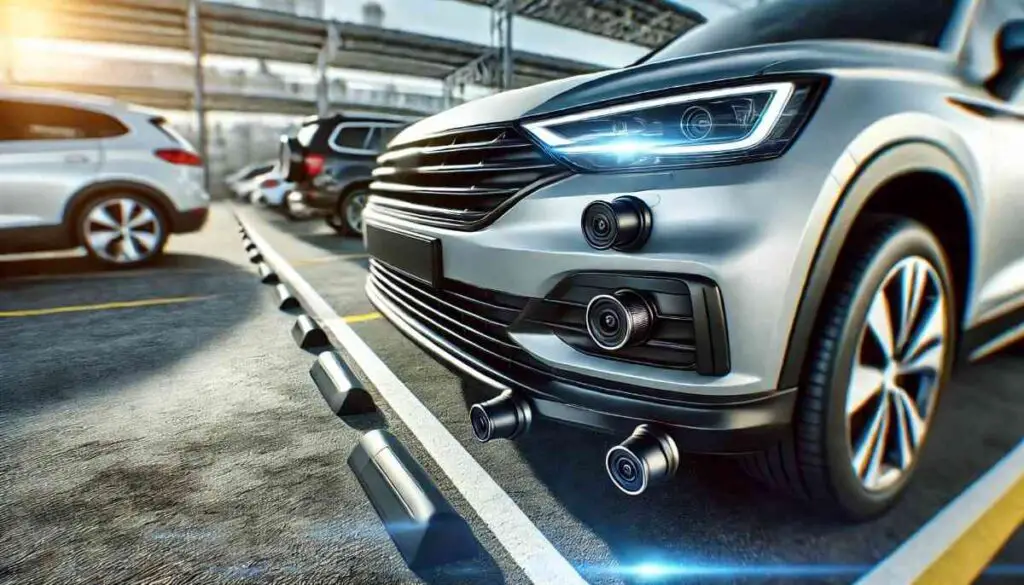Choosing the right family vehicle is a significant decision that impacts your daily life. It’s not just about transporting your family from one place to another, but about selecting a vehicle that meets your unique needs. This guide walks you through the important factors to consider to ensure your family vehicle is safe, comfortable, and functional for all your needs.
Why Choosing the Right Family Vehicle Is Crucial
A family vehicle needs to accommodate a range of factors, including the number of passengers, comfort, convenience, safety, and how often you travel long distances. Choosing wisely means that your family will enjoy a reliable and enjoyable ride, whether commuting locally or embarking on road trips.
Key Factors to Consider When Purchasing a Family Car
Some of the most important considerations include:
-
Family size and future growth
-
Budget and financing options
-
Safety features
-
Vehicle size and configuration
-
Comfort and convenience
-
Fuel efficiency
-
Reliability and longevity
-
Test driving and evaluations
-
Expert opinions and reviews
I. Identifying Your Family’s Specific Needs
Assessing the Size of Your Family
The size of your family plays a significant role in determining what type of vehicle you need. Consider how many seats are necessary and think about future growth. If you expect to add more children or have relatives who will frequently ride with you, planning for that extra space is crucial.
How Many Seats Are Necessary?
If your family is large, a vehicle with three rows of seats, such as an SUV or minivan, may be required. For smaller families, a sedan or compact SUV may suffice.
Impact of Future Growth on Vehicle Choice
If your family is growing, you’ll need to plan ahead. Opting for a vehicle with extra seats or cargo space might save you the hassle of upgrading in the near future.
Determining Lifestyle and Activity Requirements
Consider your family’s lifestyle. Are you driving to school, running errands, or taking weekend trips? A vehicle suited for long road trips might differ from one primarily used for city commuting. You’ll also need to account for space for sports equipment, groceries, or pet transportation.
Driving Habits and Daily Usage
Your driving habits will influence the type of vehicle you choose. If you frequently drive in the city with short commutes, a compact or electric vehicle might be best. If you live in a rural area and drive long distances, a larger vehicle with all-wheel drive may be a better fit.
II. Budgeting for Your Family Vehicle
Setting a Realistic Budget
Establishing a budget early in the process helps narrow down your options. Consider what you can afford in terms of monthly payments and the total cost of ownership, including insurance and maintenance.
Price Range for New vs. Used Vehicles
New cars come with the latest features and a full warranty, but they tend to be more expensive. Used cars are more affordable, but make sure to check their reliability and ensure they have been properly maintained.
Accounting for Financing and Monthly Payments
Don’t forget to consider the financing options available to you. This includes the down payment, interest rate, and monthly loan payments. Work out the total cost over the length of the loan to see how much it fits within your budget.
Additional Costs to Consider
Apart from the upfront cost of the vehicle, consider:
-
Insurance costs for family vehicles
-
Fuel efficiency and ongoing fuel costs
-
Maintenance and repair costs over time
Exploring Financing Options
Explore the different financing options available, such as loans, leasing, or paying cash. Leasing offers lower monthly payments, but you don’t own the car at the end of the term. Purchasing allows you to own the vehicle, but the monthly payments might be higher.
III. Safety Features and Considerations
Top Safety Features for Family Vehicles
Safety is always a top priority for families. Look for vehicles equipped with:
-
Advanced driver-assistance systems (ADAS): These include automatic braking, lane departure warnings, and adaptive cruise control.
-
Child safety features: Child locks, integrated car seats, and rear-seat reminders help keep children safe.
-
Crash test ratings: Check ratings from agencies like NHTSA and IIHS for insights into how well the car performs in crash tests.
Choosing Vehicles with a Strong Safety Record
Opt for vehicles that consistently perform well in safety tests and have a reputation for durability. Check the vehicle’s crash test results and look for reviews of safety features.
Vehicle Stability and Handling
Vehicle handling, such as how it responds to turns or sudden maneuvers, is crucial for safety. Ensure the vehicle feels stable and is easy to control, especially in adverse conditions.
IV. Vehicle Size and Configuration
Choosing Between Compact, Mid-Size, or Full-Size Vehicles
Family vehicles come in various sizes, each offering unique benefits. Compact vehicles are fuel-efficient but might lack space. Mid-size vehicles offer a balance, while full-size vehicles provide more room but may consume more fuel.
Best Options for Families with Multiple Children
If you have multiple children, you might need a larger vehicle with multiple rows of seating. Three-row SUVs and minivans are popular options for large families.
Three-Row SUVs vs. Minivans
Minivans are known for their spacious interiors and ease of access for children, but some families may prefer the look and feel of a three-row SUV. Consider your family’s specific needs and preferences when making this choice.
Cargo Space and Interior Configuration
Cargo space is another important consideration, especially if you need to carry a lot of items. Look for flexible interior configurations, such as folding seats and hidden compartments, to maximize storage space.
V. Comfort and Convenience
Interior Features for Comfort
Comfort is a big part of family car selection. Look for features such as:
-
Seat materials: Leather or high-quality fabric can make long trips more comfortable.
-
Legroom and seating configuration: Ensure that there’s enough space for all passengers.
-
Air conditioning: Proper climate control for all passengers, especially on long journeys.
Technology for Entertainment and Relaxation
Family vehicles today come equipped with advanced infotainment systems, Bluetooth connectivity, and smartphone compatibility. These features can keep children entertained during long trips.
Accessibility for All Ages
Make sure the vehicle is easy for everyone in the family to get in and out of, from children to elderly family members. Larger vehicles may require extra steps for easy access.
VI. Fuel Efficiency and Environmental Considerations
Fuel-Efficient Family Vehicles
Fuel efficiency is essential to reducing long-term costs. Vehicles with higher miles per gallon (MPG) ratings can help you save money on gas.
Comparison of Hybrid, Electric, and Gas-Powered Cars
Hybrid and electric vehicles are more eco-friendly and save on fuel costs. While they may come with a higher upfront cost, the long-term savings can be substantial.
Benefits of Hybrid or Electric Family Vehicles
If you’re environmentally conscious, hybrid or electric family vehicles offer the benefit of lower emissions and reduced environmental impact. These vehicles are becoming increasingly popular for family use.
VII. Reliability and Longevity
Researching Vehicle Longevity
Some brands are known for their reliability and long-lasting vehicles. Look for cars that have a proven track record of performance over time.
Warranties and Service Plans
Choosing a vehicle with a solid warranty and service plan can offer peace of mind. Be sure to check the coverage details and consider extended service plans for long-term ownership.
VIII. Test Driving and Evaluating Vehicles
What to Look for During a Test Drive
A test drive is essential. During the drive, assess comfort, handling, and noise levels. Test the vehicle with your family to ensure everyone’s comfort and check that all features function as expected.
Taking Multiple Vehicles for a Test Run
Test driving a variety of vehicles is crucial to comparing how each one meets your family’s needs. Schedule several test drives in one day to get a feel for different options.
IX. Expert Opinions and Reviews
Seeking Professional Car Reviews
Look for reviews from trusted sources such as consumer reports, auto magazines, or online forums dedicated to family vehicles. Expert opinions can provide valuable insights into the car’s performance, safety, and reliability.
Consulting with Other Families
Don’t hesitate to ask friends, family, or online communities about their experiences with family cars. Real-life feedback can be incredibly helpful when making your decision.
X. Conclusion
Recap of the Key Factors When Buying a Family Vehicle
When choosing a family vehicle, it’s crucial to consider:
-
The size of your family and vehicle
-
Budget and financing options
-
Safety and reliability
-
Comfort, convenience, and features
-
Fuel efficiency and environmental impact
Making an Informed Choice Based on Your Family’s Needs
By assessing these factors, you’ll be able to make an informed decision that best meets your family’s specific needs.
Frequently Asked Questions (FAQs)
1. What is the best type of car for a large family?
The best car for a large family typically has three rows of seats, such as an SUV or minivan.
2. How do I know if a car is safe for my child?
Check the car’s safety ratings from NHTSA and IIHS, and ensure it has essential child safety features.
3. Should I buy new or used for my family vehicle?
New cars offer the latest features, but used cars can be more affordable if well-maintained.
4. What is the average cost of a family car?
The cost varies widely based on the type, brand, and age of the vehicle. Family cars generally range from $20,000 to $50,000.
5. How can I improve fuel efficiency in my family car?
Choose a fuel-efficient vehicle, keep tires properly inflated, and drive conservatively to maximize fuel efficiency.
6. Are electric cars a good choice for family transportation?
Electric cars can be a great choice, offering lower operating costs and environmental benefits.
7. What are the best family cars for road trips?
Large SUVs, minivans, or even crossovers with plenty of space, comfort, and entertainment features are ideal for road trips.
8. How important are crash test ratings when choosing a family vehicle?
Very important! Crash test ratings provide vital information about a vehicle’s safety performance.
9. How do I know if my family vehicle is reliable?
Research the brand’s reputation for reliability, read consumer reviews, and check the vehicle’s maintenance history.
10. What features make a car ideal for traveling with kids?
Look for rear-seat entertainment options, ample legroom, easy-to-access seats, and safety features like child locks and rear cameras.







